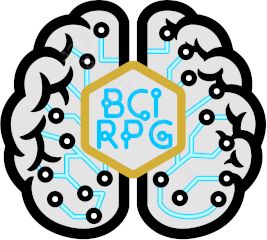Background
Background History
Our founder was first involved with role-playing games in 1977. He also began software development and engaging in the online community in 1979 (through the University of Utah) and various BBSes.
He has been involved with VR equipment since the late 1980s using Amigas (still has working Amiga 2000) and other equipment over the decades.
Developed Virtual-Reality Markup Language (VRML) websites in the mid-to-late-90s.
Experimenting with early AR in the late 90s and early 2000s with early PDAs and "smartphones" long before iOS and Android existed (Nokia, Palm phones, etc), combined with early location and GPS technologies.
Experimenting with biofeedback and bio-controlled devices since 1996 (a la mouse cursor controlled by single fingertip clip for example).
Since about 2005 working on integration of electroencephalogram (EEG) and later brain-computer interface (BCI) equipment with computers, mobile devices, VR, and AR. Experimenting with a wide range of VR and AR hardware and software, including used in educational, artistic, social, and therapeutic programs.
Background History Our founder was first involved with role-playing games in 1977. He also began software development and engaging in the online community in 1979 (through the University of Utah) and various BBSes. He has been involved with VR equipment since the late 1980s using Amigas (still has working Amiga 2000) and other equipment over the decades. Developed Virtual-Reality Markup Language (VRML) websites in the mid-to-late-90s. Experimenting with early AR in the late 90s and early 2000s with early PDAs and "smartphones" long before iOS and Android existed (Nokia, Palm phones, etc), combined with early location and GPS technologies. Experimenting with biofeedback and bio-controlled devices since 1996 (a la mouse cursor controlled by single fingertip clip for example). Since about 2005 working on integration of electroencephalogram (EEG) and later brain-computer interface (BCI) equipment with computers, mobile devices, VR, and AR. Experimenting with a wide range of VR and AR hardware and software, including used in educational, artistic, social, and therapeutic programs.
